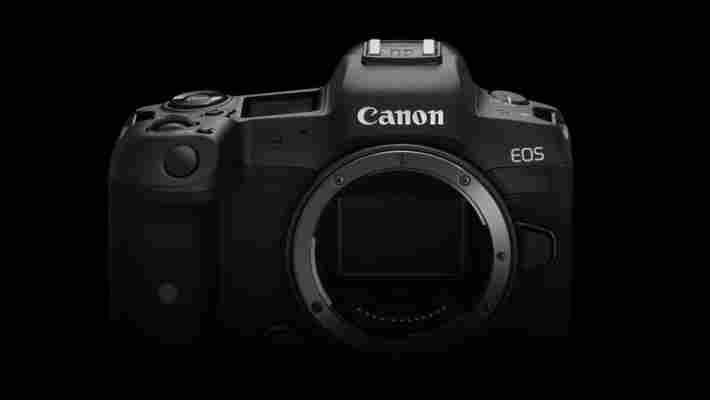I gave the Xiaomi Mi 11 Ultra a mixed review, and while I stand by the middling score it received, my thoughts have softened over the last six months – especially with the Xiaomi 12 Ultra rumors we’ve been hearing.
The Mi 11 Ultra, launched in mid-2021, was by all accounts a great phone. It had a huge, good-looking screen, three powerful rear cameras, and a top-end processor. My criticisms focused on the device’s excesses: its camera bump was unwieldy, it had a small rear screen that didn’t really add anything, and its price was so high that it was difficult to recommend to most buyers.
But now we’ve been hearing rumors of its successor, the Ultra version of the Xiaomi 12 that launched a month ago, it makes the Mi 11 Ultra sound starkly minimalist in comparison.
In defense of the Xiaomi Mi 11 Ultra
Usually, when I review a smartphone, I’ll use it for the testing period, then move onto another review device and never look back. Now and then, in quiet periods when there are no new phones out, I’ll use an older phone that I enjoyed testing. But other than those rare moments of tranquility, I rarely continue to use older devices.

That’s not the case with the Xiaomi Mi 11 Ultra though, as I’ve continued to use it pretty consistently since I tested it six months ago.
There’s one key reason for that – the Mi 11 Ultra has a fantastic set of cameras. They are far more versatile and useful than the ones on any device I've tested before or since.
Sometimes, if I’m going on a trip, I’ll make sure to bring the Xiaomi phone along so I can take the best snaps possible – and I’m not the only one at TechRadar who’s done this .
I also shoot lots of video (for personal film work as well as for TechRadar videos) and the Mi 11 Ultra is the device I now default to for this. Not only does the 4K video look great, but the big battery, plentiful storage space, and powerful internals all help with the recording process.
I now find it super easy – easier than on a DSLR or vlogging camera, I should note – to pop the Mi 11 Ultra in a tripod and quickly record video that can be used on our YouTube channel. Recently, I used the Mi 11 Ultra for our Samsung Galaxy S21 FE review , both for my narration video and the product shots, which you can see below.
So I've found the Xiaomi Mi 11 Ultra very useful as an ersatz video-recording camera. And while using it this way, I haven’t bumped up against the issues I found in my review, since I’m not using it as an average smartphone. Fitting its mountainous camera bump into my pocket isn’t a problem if I’m not carrying it around with me all day, and I can completely ignore the rear display.
Because of this, my recent experiences with it have been positive, and I don’t find it as annoying to use as I once did. But another key thing that’s changed my mood is rumors of the Mi 11 Ultra’s successor.
The Xiaomi 12 Ultra sounds too much
While the Xiaomi 12 and 12 Pro have been unveiled, the Ultra sibling has not, and we don’t expect it to come along for at least a few months.
Leaks have been focused on the phone’s camera bump. It sounds even bigger than the Mi 11 Ultra’s, with space for up to seven lenses. Yep, seven different cameras – that’s even more than the Galaxy S21 Ultra.
There doesn’t seem to be a mini screen on the back, which is a change we’re all for, but if the number of rear cameras is true, then we don’t imagine the new phone will be much cheaper than its predecessor.
“So,” I hear you say, “if your favorite thing about the Mi 11 Ultra is the camera, surely you’re all for the Mi 12 Ultra having more cameras?” Well, it’s not quite that simple.

You see, with smartphones, an increase in the number of cameras doesn’t equal improved camera capabilities, and there are diminishing returns. Quite simply, there aren’t enough different types of smartphone sensors and lenses that having seven of them will give the 12 Ultra that many extra uses.
Sure, you need a main, ultra-wide, and telephoto camera, and a periscope and macro snapper would be fun, too. But unless the company tries something bonkers, like an Oppo-style microscope camera or a sensor paired with an anamorphic lens (which is what they use on movie cameras) we don’t see seven rear snappers being remotely useful.
Plus, how big does a phone need to be if there are seven cameras on the back? The word ‘phablet’ has lost its original meaning – back when it was used a lot a ‘big’ phone was anything with a screen larger than a fingernail – but a phone would need to be actual tablet-sized to fit seven decent rear snappers.
Phone sensors come in many different sizes, but bigger is always better, as it means the sensor can take in more light. Unless Xiaomi is going to cram seven tiny (and rubbish) sensors onto the rear panel, these snappers are going to take up some serious real estate.
If the rumors are true, the 12 Ultra will probably be a massive phone that’s hard to hold, just to fit in some arguably-useless rear cameras. On top of that, we expect it would be hugely expensive as a result of the aforementioned changes.
For those reasons, I’m really dubious about the Xiaomi 12 Ultra. Its predecessor got a mixed score because it focused on top specs without any consideration for affordability or useability, and it seems the new version might double down on that misguided commitment.
Of course, this is all based on leaks and rumors. The Xiaomi 12 Ultra might actually be completely different and we’d be pleasantly surprised if that were the case. We’ll just have to wait and see.
Here's why your favorite Xbox 360 game isn't backward compatible on Xbox Series X
Microsoft’s backward compatibility program may have come to an end on November 20, 2021, with more than 70 games being added as part of Xbox’s 20th anniversary , but you may be wondering: "Why hasn’t my favorite Xbox 360 or original Xbox game made the cut?"
Throughout the life of the Xbox backward compatibility program, people have always questioned why more titles haven't been added. Jason Ronald, director of program management at Xbox, explained to TRG that making a game back-compat wasn't as straightforward as people might think.
“A lot of the games in the original Xbox generation or the Xbox 360 generation, at that time, the idea of forward compatibility – and thinking about how these games will live on – was not part of the DNA of the industry,” says Ronald.
“There would be titles that we would be working on, and we would get them technically working. But then all of a sudden, we’d realize all the different approvals that we would need: whether it's a publisher or developer or a license holder.
“And that actually created a lot of work and a lot of challenges,” Ronald goes on to explain. “In some cases, when you think about the consolidation of companies, or IP being purchased, sometimes it's even difficult to figure out who you need approval from!
“But I will say every game is a unique challenge. And that’s one of the harder things to get across to the community. Because people are like, ‘Oh, well, you did this game, you should do that game’. Every game is a unique set of challenges and that's where a lot of the work goes behind actually bringing a game forward.”
So many games, so many hurdles

Issues with licenses, publishers, and technical quirks mean that there are hundreds of games that Microsoft wanted to add to the Xbox backward compatibility program, but simply couldn't. Some titles, as Ronald shares, have taken years to be added to the program due to the aforementioned issues.
“When we started this last patch [over 70 back-compat titles were added on November 20, 2021], we actually started with a list of hundreds of games that we were going to go try,” says Ronald. “And we didn't know if we were going to get five [titles], if we were going to get 10 [titles], or if we're going to get 20 [titles].
“And to be honest, there are some games in the program that I just never thought we would be able to bring forward. It’s a labor of love and it takes, in some cases, years to be able to bring these forward, but the team has always been really committed to doing everything we can for the fans.”
So there you have it. There’s a number of reasons why certain older titles like Blur, Stranglehold, and Project Gotham Racing 4 aren’t backward compatible on Xbox Series X – and it's not for want of trying.
Canon tipped to launch three affordable EOS R mirrorless cameras in 2022
Recent Canon cameras launches like the Canon EOS R5 C have been aimed squarely at professionals, but strong rumors suggest the camera giant will be launching three affordable EOS R models later this year.
The reliable Canon Rumors says "a very good source" has confirmed that three EOS R cameras are the on the roadmap "for the second half of 2022", with all of them expected to fill the considerable gap below current models like the Canon EOS R5 .
Right now, all Canon EOS R cameras have full-frame sensors. But one of the three rumored cameras, possibly called the Canon EOS R7 , is expected to be the first to be built around a smaller APS-C sensor. Canon Rumors' source has suggested it will be a "true hybrid camera" that'll be like a cross between the Canon EOS M50 Mark II and Canon EOS 7D Mark II DSLR.
There's also good news for anyone who's been waiting for a successor to the aging Canon EOS RP , a full-frame model that's currently the most affordable in Canon's EOS R lineup. The Canon Rumors source says that "a new entry-level full-frame RF mount camera will be announced" and will use the same 20MP sensor as the Canon EOS R6 .
The third rumored camera is more of a mystery. This will apparently sit in between the Canon EOS RP successor and the Canon EOS R6, and will include a new image sensor with a lower pixel count than the 45MP Canon EOS R5 . The most likely scenario for this camera is that it'll succeed the original Canon EOS R and act as the mid-range model in its mirrorless lineup.
One slight downer for keen photographers, though, is that Canon Rumors' source also suggested that "the EVF may be removed from at least one of these cameras", most likely the entry-level model. An electronic viewfinder is considered an essential by most photographers, but for hybrid shooters (who focus mainly on video) it's arguably less important and removing it is a good way to keep prices down.
Despite the chip shortage affecting most camera manufacturers, including Canon, Canon Rumors speculates that the manufacturer "may have found some solutions to the problem internally", hence the apparent inclusion of three new models on its 2022 roadmap. The rumors suggest we'll have to wait until the second half of the year to see the new cameras, but it's potentially good news for those who can't stretch to the Canon EOS R5 ($3,899 / £4,199 / AU$6,899) or EOS R6 ($2,499 / £2,499 / AU$4,499).
Analysis: Promising news for hobbyists and amateurs

Photography has always been an expensive hobby, but that's particularly been the case in recent years as the big camera manufacturers have started new mirrorless systems led by high-end, professional models.
While this is understandable, given that professional cameras and lenses are where the high margins are, these new rumors will be music to the ears of those who've been keen to upgrade to Canon's EOS R system without having to sell their car.
There have long been rumors about an APS-C model for Canon's EOS R range, given its reluctance to invest in its EOS-M cameras. The smaller sensor should result in a relatively affordable price tag and compact dimensions, with the only downside being the current lack of native APS-C lenses in Canon's RF range.
Another potential issue for those who mainly lean towards photography rather than video are the rumors about the removal of the electronic viewfinder on "at least one of these cameras", according to Canon Rumors' source.
Video is by far the biggest growth area for camera manufacturers, given the explosion of the creator economy, so it's possible that the rumored Canon EOS RP successor will lean heavily in that direction.
But however Canon plans to pitch these rumored cameras, the arrival of affordable options in its EOS R lineup would be a cause for celebration, and shows that standalone cameras don't necessarily have to be niche, professional offerings in the smartphone age.